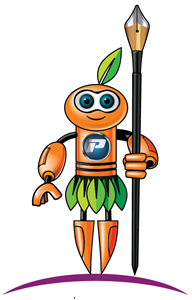14 Jul Technical Writer’s in Agile
Technical Writer’s Fitment in Agile model - Fragile or Agile?
- Nilanka Wijemuni
As several software engineering teams have moved towards working in Agile model, the role of technical writers in this model still remains a topic of debate. While there is an obvious need to create or update instruction manuals and other guides in iterations, the question to ask ourselves is where would a Technical Writer fit in this paradigm? Unlike the Waterfall model, the Agile model does not have a separate phase for documentation. Considering this, will the software industry’s inclination towards Agile make the technical writer’s role more Agile or Fragile?
This article will provide an overview of how Technical Writers would fit in the Agile model. Before that, let’s understand the Agile methodology in a nutshell.
Agile methodology
Unlike the conventional Waterfall model, the Agile model develops the software incrementally from start to finish without building the entire software at one shot. The software is modularized into components and developed in small blocks at every iteration. After obtaining the product stakeholder’s feedback at every iteration, the team makes the required changes. This process continues until the final product is made perfect. Now let us look into where a technical writer fits into this model.
Technical Writer’s Adoption into Agile model
With the traditional software development models, a technical writer would wait until the project managers provide robust requirements or complete release updates. Furthermore, they would carry out their duties separately in their department, as it is the case of separated teams and responsibilities.
In an Agile model, none of these things exist. So, a technical writer must adapt efficiently and effectively as the software develops. As a Technical Writer, you have to document in a limited time, which makes the requirement gathering more challenging. You also have to depend on interacting with project teams to gather requirements rather than reading the requirements.
How do you document in an Agile model?
Gone are the days where you created redundant user manuals or technical specifications using word processing software. Now in the agile environment, the technical writers should get familiar with developing documentation using XML based authoring tools. Most importantly, they should be prepared for the following:
- Stay abreast of the product changes.
- Keep the documentation ready for constant changes as the requirements.
- Reuse content using XML authoring tools such as Madcap Flare and Adobe FrameMaker, and create editable content across a common repository for project teams, if the need arises for them to provide inputs.
- Regular communication with the software developers and engage feedback in every SDLC stage from daily sprint reviews and user acceptance testing to final product sign-off.
Documentation Structure in Agile projects
Best Practices For a Technical Writer in the Agile model
Set your own Deadlines
In some instances, you may not be able to participate in sprint discussions between your team and the stakeholders of the proposed system. Due to the agile model’s rapid nature, there could be situations where the entire software is built without end-user documentation. In such cases, you should set your deadline after the developers’ deadline to complete your piece of writing. However, it is best to place your own writing cycle if you cannot keep with the team’s rhythm.
Keep it Real
In circumstances where you feel it is impossible to accomplish your task on the current sprint, it is most likely there could be some issue in your planning. As a remedy, you need to assign limited but critical tasks for each sprint. So if you have any pending tasks from the previous sprint, ensure to complete them first.
Track the changes
Frequent requirement changes can impact technical writers negatively. The best way to counter such scenarios is to attend meetings and monitor issues on the bug tracker. If there is a technical writing team, you can delegate one writer and a backup writer to attend meetings and track all the changes. It would also be vital to mark tasks with several colors such as Started, Not Initiated, Completed, etc. If a section has features that developers are developing currently, it can be removed from the document, making it hidden.
Documentation Structure in Agile projects
Apply User Stories
Compared to a fixed set of requirements to achieve the final product, agile requirements are in the form of user stories that helps you to draft the initial and subsequent content.
Content Draft Outline
Start building content for all the features and keep a tab on the other features that developers plan to develop. This method would provide you a clear picture of the overall documentation. At each sprint, you need to fill the sections in the document with fundamental descriptions. During this process, you need to ensure that you have enough information for end-users to accomplish a particular task.
Conclusion
Hope this article helped you learn a few essential aspects of technical writing in the agile methodology. It can be challenging at first but gets better only by practice in the real project scenario.
About the Author
Nilanka Wijemuni is an enthusiastic Freelance Technical Writer based out of Sri Lanka. Writing is his hobby, which he has now transformed into a career. For the past two years, he has been writing articles for technical blogs. Prior to writing, he was into front-end and back-end web development for 10+ years, during which he worked with diverse technologies. When he is not writing, he enjoys doing Yoga and spending time with family. Connect with him on LinkedIn.





No Comments